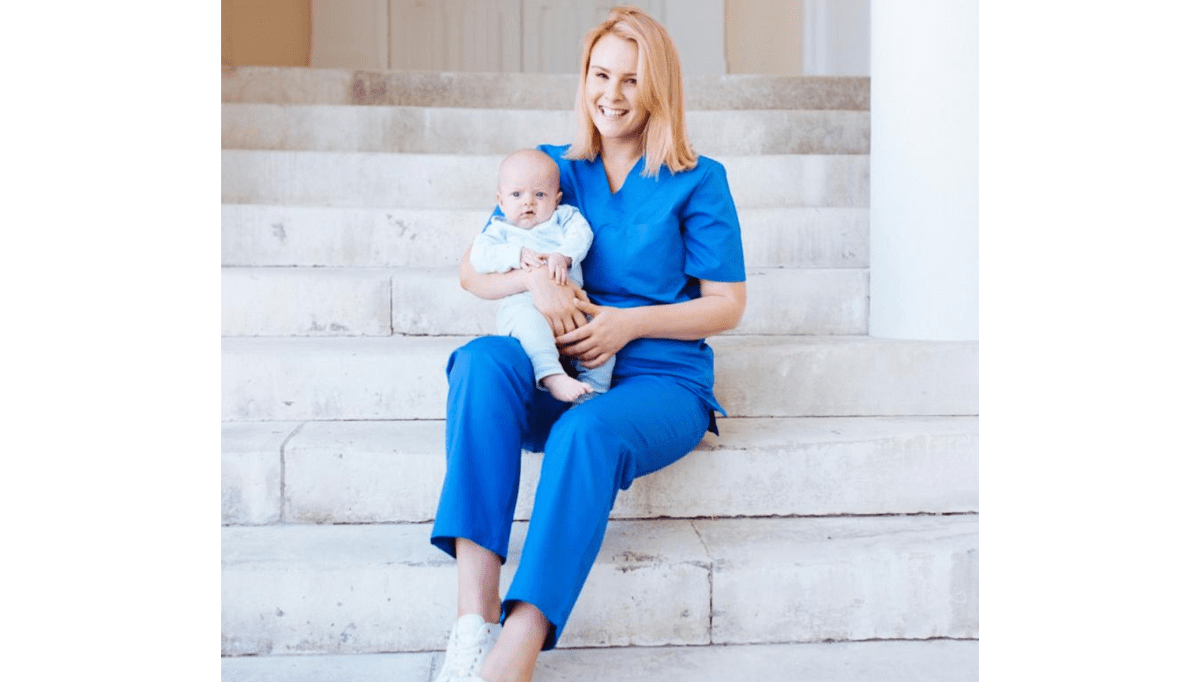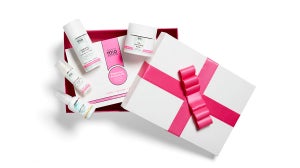Pregnancy really is a whole other world. From massaging bits you never thought you would, to packing essential products that you didn’t know you needed, it can be utterly confusing.
I’m Midwife Vic, and I’m here to simplify it all, guiding you through some of the key things to know and do in the lead up to labour.
Today we’re tackling colostrum harvesting! Lets go!

What Is Colostrum?
Colostrum is the first form of milk you produce as a food source for your baby. Colostrum develops in your breasts in pregnancy, and some women report leaking throughout their pregnancy. It’s loaded with immune boosting properties, and nutrients and supports your baby in the first few days of life before you start to produce breastmilk. Often referred to as ‘liquid gold,’ it’s high in protein, low in fats, and is easily digestible. It’s full of antibodies and white cells and acts like your baby’s first immunisation. It also has high levels of immunoglobin and helps fight off any viruses or bacteria in your baby’s gastrointestinal tract. This supports your baby’s tum even more as it works like a lovely little laxative, flushing out waste products easily.
You will produce really small amounts of colostrum at first, only droplets at a time. This results in around a little over two tablespoons over the first 24 hours matching your baby’s small tummy as well as their ability to easily digest their food. Colostrum volume slowly increases until around three days when your breastmilk comes in. Your breasts work on a demand and supply system, and the more your baby feeds at the breast, the more you will produce for your little one .

What Is Colostrum Harvesting and Why Should I Do It?
Colostrum harvesting means collecting colostrum from your breasts in pregnancy, ahead of your baby’s birth. This can be done from around 37 weeks of pregnancy onwards and doesn’t have any impact on colostrum/breastmilk production when your baby arrives.
Colostrum can be collected in small feeding syringes, stored in the freezer, and brought with you into hospital when you have your baby. This has the added benefit of providing a food source for your baby. Whilst you may wish to breastfeed, and will be supported to latch your baby directly to your breast by your midwives, if latching is proving tricky at first, colostrum is the perfect top up solution.
Colostrum can be used in place of a feed if you aren’t able to breastfeed straight away, and can also be used for babies who are separated from mums, for example those that require admission to neonatal unit. If breastfeeding is going well, then colostrum can be given as additional volume. With super powerful healing properties, colostrum can also be used on rashes, goopey eyes, or any trauma to your nipples or breasts from incorrect latching while you learn to breastfeed.
It’s such a brilliant idea to have colostrum to hand during those early days, as it offers up a plan B should feeding be a little tricky at first. If top ups of milk are advised by your care providers for a clinical reason, learning how to collect colostrum can be really daunting. If you already have this skill down you will feel much more confidant handling your breast, as well as having a feeding solution to hand for top ups.
If you plan to combination feed, which means both breast and bottle feed or possibly breast milk feed via bottle, colostrum harvesting is the perfect first skill to master to familiarise yourself with feeding your baby via expressed milk.

How Do I Start Colostrum Harvesting?
Colostrum harvesting is quite a skill and it often takes a bit of practice to get the hang of it. You can try colostrum harvesting – also known as ‘hand expressing’ from around 37 weeks of pregnancy onwards. The reason it’s not recommended before 37 weeks is because it relies on the production of a hormone called oxytocin ( among a few other hormones!). Oxytocin is the hormone produced for labour and birth. It’s also the hormone we produce when we feel calm and safe, and is often referred to as the love hormone. Although only small amounts are produced when you hand express, there is always the risk of causing contractions. This is why it’s important your baby is well grown before you start to express.
Handy Tip – Because of this little nugget of hormone info, colostrum harvesting can also be handy to try to encourage labour. You’re welcome!
The more oxytocin you are producing the more likely you will produce colostrum. For oxytocin production you need to be in a calm environment, where you feel safe and private.
You will need clean hands, and something to collect the colostrum in. Colostrum syringes are provided by most maternity units. Ask your midwife if they are able to provide them for you, and if they aren’t ask for advice on where to buy them.
- Start by massaging your breast from armpits down towards your nipples. Making sweeping movements and gentle kneading movements with your knuckles.
- You then want to make a C shape with you first finger and thumb, placing the finger pads on the edge of your areola. Around this area, deep within the breast is where the milk ducts are located. It’s these ducts that need pressed to eject the colostrum out and through the nipple for collection.
- Using gentle pressure with your fingers press into these dcuts, pressing back and into your breast, together and forward. Check out some of our reels on the Mama Mio page for a demonstration of what this looks like as it’s quite a tricky technique to grasp at first.
- Continue to do this and when you are ready to change position, work around the areola like a clock face, always keeping your finger and thumb directly opposite to one another.
- Collect the colostrum in a syringe by pulling the plunger of the syringe back, sucking up each droplet. You can ask your partner to collect while you try and express or you can try doing this on your own if you would prefer.
- Make sure each syringe is labelled with time and date before it’s stored, with the cap attached to the end for hygiene. Storage should be in a freezer, where you can keep colostrum and breastmilk for up to six months, although it will likely only be a few weeks before you take it out to use for your baby.
Remember it can also be stored in a fridge, but keeping the colostrum frozen will preserve it for the weeks leading up to your baby’s birth.
Make sure to attend any feeding classes you are offered through your local hospital, as well as looking out on Mama Mio's Instagram for our Midwife’s Q and A’s as well as our Mama Mio Midwifes reels for tips on colostrum harvesting and more!
Taking time to take care of yourself is so important mama! Check out our guide to what maternal mental health is and why it is important, here.




